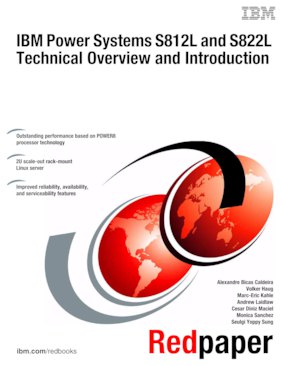
Published on 11 August 2014, updated 12 July 2017
Read in Google Books
Share this page:
ISBN-10: 0738453765
ISBN-13: 9780738453767
IBM Form #: REDP-5098-00
Authors: Scott Vetter, Alexandre Bicas Caldeira, Volker Haug, Marc-Eric Kahle, Cesar Diniz Maciel and Monica Sanchez
Abstract
This IBM® Redpaper™ publication is a comprehensive guide covering the IBM Power System S812L (8247-21L) and IBM Power System S822L (8247-22L) servers that support the Linux operating system (OS). The objective of this paper is to introduce the major innovative Power S812L and Power S822L offerings and their relevant functions:
- The new IBM POWER8™ processor, available at frequencies of 3.02 GHz, and 3.42 GHz
- Significantly strengthened cores and larger caches
- Two integrated memory controllers with improved latency and bandwidth
- Integrated I/O subsystem and hot-pluggable Peripheral Component Interconnect Express (PCIe) Gen3 I/O slots
- Improved reliability, serviceability, and availability (RAS) functions
- IBM EnergyScale™ technology that provides features such as power trending, power-saving, capping of power, and thermal measurement
This publication is for professionals who want to acquire a better understanding of IBM Power Systems™ products.
This paper expands the current set of IBM Power Systems documentation by providing a desktop reference that offers a detailed technical description of the Power S812L and Power S822L server.
This paper does not replace the latest marketing materials and configuration tools. It is intended as an additional source of information that, together with existing sources, can be used to enhance your knowledge of IBM server solutions.
Table of Contents
Chapter 1. General description
Chapter 2. Architecture and technical overview
Chapter 3. Virtualization
Chapter 4. Reliability, availability, and serviceability